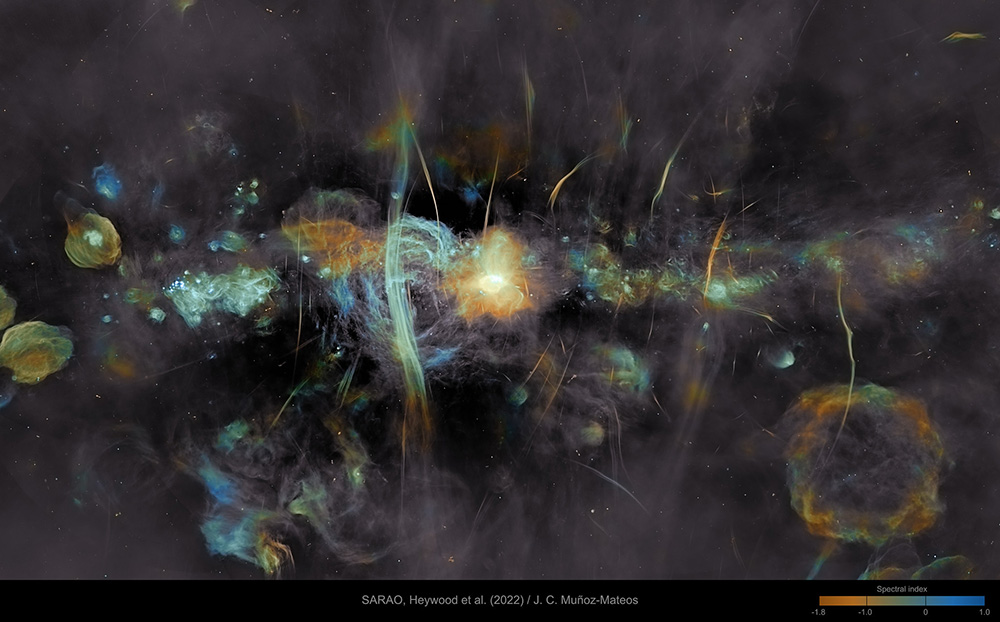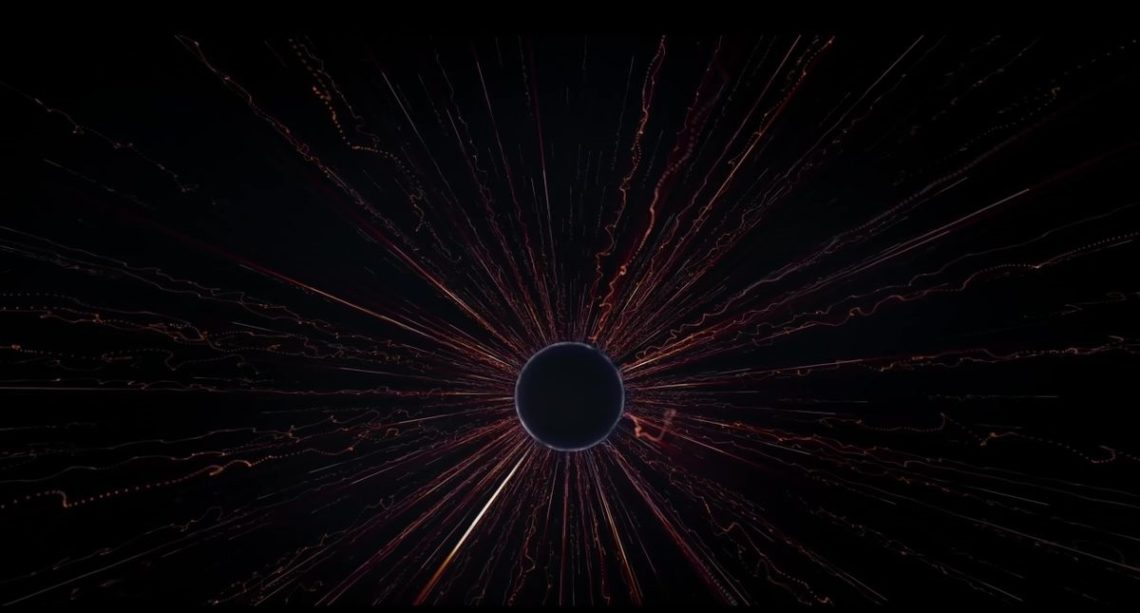Using observations from 2017 and 2018, the Event Horizon Telescope (EHT) Collaboration has deepened our understanding of the supermassive black hole at the center of Messier 87 (M87*). If you read English or Dutch, I highly recommend checking out the official press release: M87* One Year Later: Catching the Black Hole’s Turbulent Accretion Flow, of het nieuws in de Nederlandse Onderzoekschool voor Astronomie (NOVA): Gas bij zwart gat M87 spiraliseert tegen draairichting in. I am proud to be quoted in the official press release, acknowledging the time and effort I devoted to that project. I performed statistical analyses to compare general relativistic magnetohydrodynamic (GRMHD) simulations with observations of M87*. My…
Read More >>Exploring Black Hole Accretion Dynamics: My AAS 243rd Meeting Experience
Hey everyone! So, I did not physically attend the 243rd Meeting of the American Astronomical Society (AAS) held in New Orleans, Louisiana, from January 7th to 11th, 2024. However, my presence was still felt at the conference, thanks to my advisor, Sera Markoff, who presented two interactive posters on my behalf. Let me start by introducing my first poster presented at the conference. Check it out through the link: “High-resolution insights into black hole accretion dynamics and jet phenomena”. In this work, we perform a convergence study with the GPU-accelerated GRMHD (General Relativistic Magnetohydrodynamic) code H-AMR on a wider range of resolutions than has ever been previously explored. What made…
Read More >>Visualizing Black Holes
An exhibition about black holes will open next week at the Valkhof Museum in Nijmegen, where we can think about the mysteries surrounding these extreme gravity objects. Those astrophysical monsters have not only inspired scientists but also artists from all fields, especially in visual arts and music. A great example is the Black Hole Symphony where the music leads us to a sensory experience of how black holes behave. In understanding science, it is vitally important to have a graphic representation where for example we can visualize what happens to the plasma when it is near a black hole. The Event Horizon Telescope is a project that captured/photographed the shadow…
Read More >>Read this before watching Oppenheimer
Few individuals have left as profound a mark on the world as J. Robert Oppenheimer, renowned for his pivotal role in the development of the atomic bomb during World War II. Yet, Oppenheimer’s contributions extend far beyond this infamous accomplishment. Last month, I watched the premiere of Oppenheimer in the cinema and was intrigued by a scene showcasing his major, yet lesser-known, contribution to science. In 1939, Oppenheimer collaborated with his student, George Volkoff, and published a groundbreaking paper titled “On Massive Neutron Cores” which laid the foundation for our understanding of neutron stars. The Tolman–Oppenheimer–Volkoff limit establishes that if the mass of a neutron star is greater than a critical value of approximately 2 solar…
Read More >>The Secrets of Black Hole Jets
Black holes are some of the most fascinating objects in the universe, known for their immense gravity and mysterious nature. While they are famously known for their ability to swallow everything in their vicinity, including light, black holes can also emit powerful beams of energy called jets. Jets are narrow beams of plasma that shoot out from the proximity of black holes at relativistic speeds, meaning they are close to the speed of light. This week, Nature published a new observation of the supermassive black hole at the center of the M87 galaxy that captured the first image of the jet and the black hole shadow together. See the science…
Read More >>A Wormhole or a Black Hole?
Last year, the Event Horizon Telescope (EHT) presented the observations of Sagittarius A* (Sgr A*), located at the Galactic Center of the Milky Way. Their results confirm the presence of a supermassive black hole at the center of our galaxy (see Fig. 1 or this interview). Such an astrophysical object is expected to be described by the Kerr spacetime, which is a solution of Einstein’s equation for a rotating black hole. Furthermore, they also investigated potential deviations from the Kerr prediction, such as the traversable Morris–Thorne wormhole! See my previous blogpost for more context about wormholes. The visual difference between simulations of the accretion flow from the two spacetime geometries is shown in…
Read More >>What is in the Center of our Galaxy?
Last week we received the announcement that on May 12, through press conferences around the world, the Event Horizon Telescope (EHT) will reveal groundbreaking results about the center of our galaxy: the Milky Way. More than a hundred years had to pass since the publication of Albert Einstein’s General Relativity, for us human beings to be able to decipher that mysterious center of our existence, from the point of view not only of the solar system but from a universal vision. But why are we interested in that? And how is it possible to observe something so far away? For many centuries we have wondered about the origin and evolution…
Read More >>¿Qué hay en el Centro de Nuestra Galaxia?
La semana pasada recibimos el anuncio de que el próximo 12 de mayo, mediante conferencias de prensa en todo el mundo, el Telescopio de Horizonte de Eventos (EHT) va a revelar revolucionarios resultados sobre el centro de nuestra galaxia: La Vía Láctea. Tuvieron que pasar más de cien años desde la publicación de la Relatividad General de Albert Einstein, para que nosotros los seres humanos seamos capaces de descifrar ese misterioso centro de nuestra existencia, desde el punto de vista no solo del sistema solar, sino desde una visión más universal. Pero ¿por qué estamos interesados en eso? y ¿cómo es posible observar algo tan lejano? Durante muchos siglos nos…
Read More >>Wormholes, real or science fiction?
In this blog, I will introduce the mathematical concept of wormholes in general relativity, the possible implications in serious astrophysical research, and how this became an inspiration for the german science fiction series: Dark. With mathematics, it is possible to duplicate the geometry of spacetime, for example, we can make a copy of the Schwarzschild geometry (describing a static Black Hole) in reverse. In this reversed version, the copy behaves as a White Hole where all objects are destined to escape from it, contrary to the case of a black hole. In Fig. 2, if we consider region I being the universe where we live, then by traveling to the…
Read More >>How to Destroy a Black Hole
Black holes are highly destructive objects in the universe, e. g., a star can be destroyed if it gets too close to the extreme gravity of a black hole (figure 1). On the other hand, there is nothing we could throw at a black hole that would damage it, not even another black hole would do it, they will simply merge into a larger one (figure 2). However, there may be a way to destroy these objects, all we need to do is to wait. In 1974, Stephen Hawking realized that quantum fluctuations could lead a black hole to lose mass at a very low rate. These fluctuations continuously create…
Read More >>


